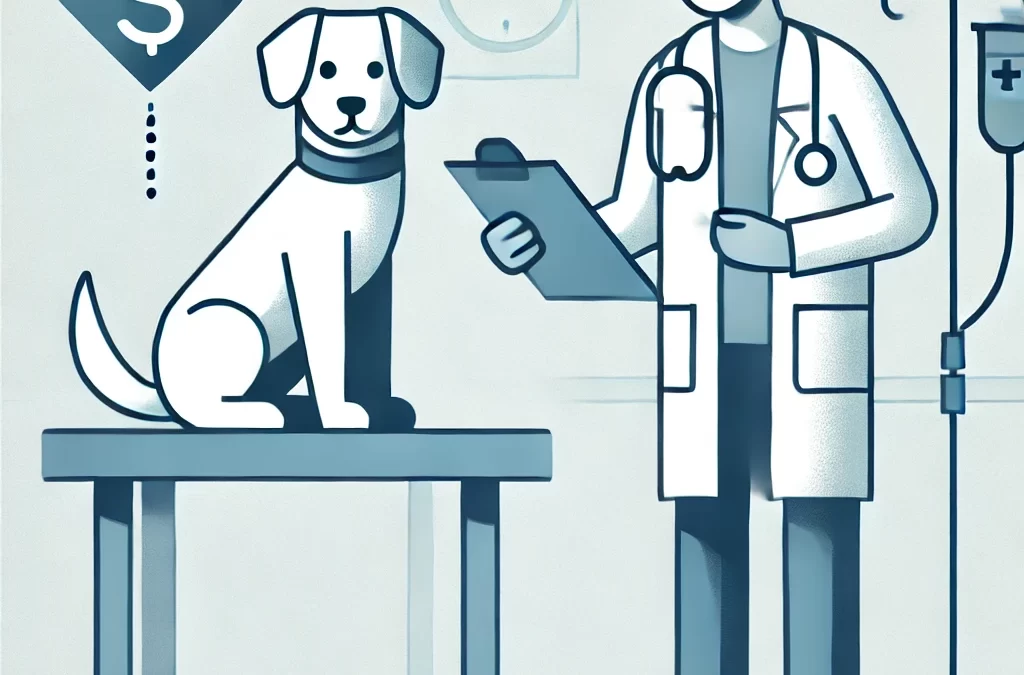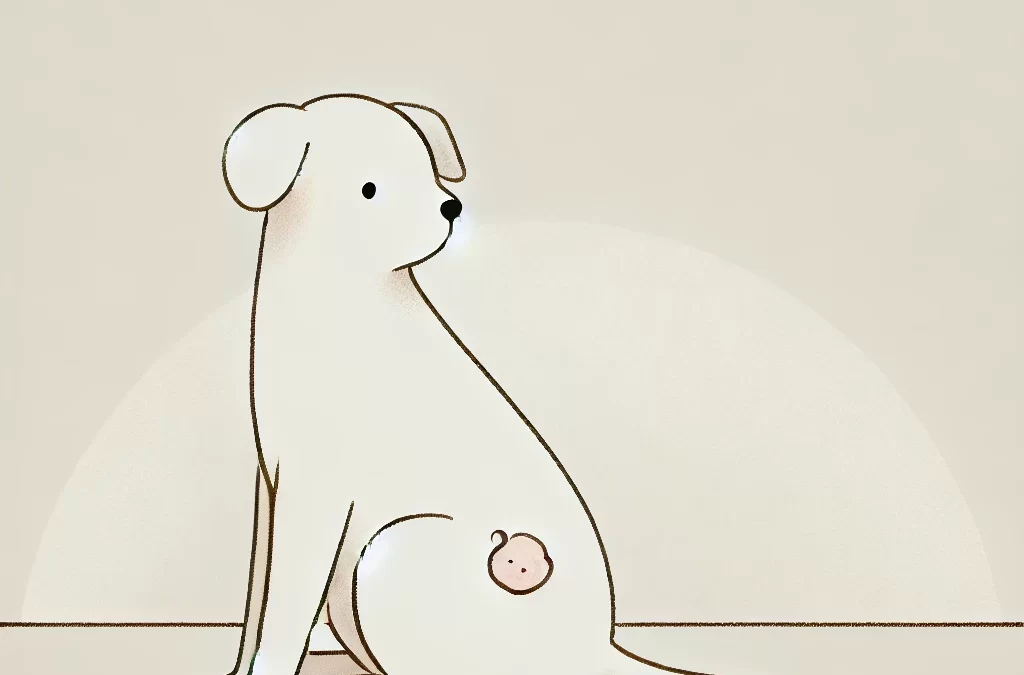
par TCMVET | Nov 25, 2024 | Cancer et tumeurs du chien
Osteosarcoma, a highly aggressive bone cancer, often strikes fear into the hearts of dog owners. Conventional treatments like amputation and chemotherapy, though common, can be financially and emotionally taxing. However, natural therapies are gaining traction for their potential to improve quality of life, alleviate symptoms, and support the body’s healing processes. Below, we delve into a variety of innovative natural treatments tailored to canine osteosarcoma.
Comprendre l'ostéosarcome chez le chien
Osteosarcoma typically affects large and giant breeds, targeting the limbs. It is characterized by rapid tumor growth and a high risk of metastasis to the lungs. Early detection and a multifaceted treatment approach can significantly enhance a dog’s quality of life.
Natural Treatments to Support Your Dog’s Journey
1. Herbal Remedies for Pain Management
Natural pain management can reduce reliance on pharmaceuticals, which often have side effects. Consider these herbs:
- Boswellia Serrata: Known for its anti-inflammatory properties, this resin reduces swelling and improves mobility.
- Curcuma (curcumine): A potent anti-inflammatory and antioxidant, turmeric can ease joint discomfort and has been studied for its anti-cancer effects.
- Yunnan Baiyao: A Chinese herbal formula renowned for promoting blood circulation and relieving pain, especially in cases of bone-related injuries or cancer.
2. Dietary Strategies to Strengthen Immunity
Nutrition plays a pivotal role in supporting a dog’s immune system during cancer treatment. Focus on:
- High-Protein Diets: To maintain muscle mass and energy levels.
- Acides gras oméga-3: Found in fish oil, these help reduce inflammation and may slow tumor growth.
- Low-Carbohydrate, High-Fat Meals: Cancer cells thrive on sugar, so ketogenic-style diets may limit tumor progression.
3. Cannabidiol (CBD) for Cancer Support
CBD oil derived from hemp is celebrated for its anti-inflammatory and anti-tumor properties. It helps:
- Reduce pain and anxiety.
- Improve appetite and energy levels.
- Potentially inhibit the growth of cancer cells, as shown in emerging studies.
When choosing CBD oil, ensure it is full-spectrum, organic, and free from THC.
4. Acupuncture and Traditional Chinese Medicine (TCM)
TCM treatments like acupuncture can complement other therapies by:
- Alleviating pain and improving blood circulation.
- Enhancing immune function.
- Restoring balance in the body’s energy (Qi).
Herbal formulas such as Baituxiao may specifically target tumor growth and enhance overall well-being. Always consult a veterinarian experienced in TCM to customize treatments for your dog.
5. Physical Therapy and Gentle Exercise
Post-surgery or as part of palliative care, physical therapy helps:
- Maintain mobility and prevent muscle atrophy.
- Boost mood and mental engagement. Activities like swimming or controlled walking can be particularly effective for dogs with limb amputation.
6. Homeopathic Approaches
Some pet owners explore homeopathic remedies, such as:
- Symphytum: Known as “bone knit,” this remedy may support bone healing.
- Hecla Lava: Used for bone conditions, including tumors and osteosarcoma.
Consult a homeopathic vet for proper guidance and dosage.
Case Study: A Natural Journey
Take the story of Bella, a 9-year-old Great Dane diagnosed with osteosarcoma. After her amputation, her owner supplemented conventional treatment with a high-protein, low-carb diet, CBD oil, and Boswellia extract. Regular acupuncture sessions improved Bella’s mobility and mood. The holistic approach not only prolonged her life but also ensured she lived with comfort and dignity.
Tips for Dog Owners Exploring Natural Treatments
- Work with a Holistic Veterinarian: Collaboration ensures therapies are safe and effective.
- Monitor Progress Closely: Regular check-ups and imaging help assess how treatments are working.
- Stay Open-Minded: Combining natural and conventional treatments often yields the best outcomes.
The Importance of Emotional Support
Caring for a dog with cancer can be emotionally draining. Building a support network of friends, family, and holistic veterinarians ensures you’re not alone on this journey.
Conclusion
Natural treatments for osteosarcoma in dogs focus on enhancing quality of life, alleviating pain, and supporting the immune system. By combining evidence-based natural therapies with traditional treatments, you can create a care plan that prioritizes your dog’s comfort and well-being. Remember, every dog is unique, and a tailored approach is key to success.
Your canine companion deserves a fighting chance—naturally.

par TCMVET | Nov 24, 2024 | Cancer et tumeurs du chien
When a beloved pet is diagnosed with cancer, the emotional toll on their human companions is immense. But alongside the heartache comes another daunting reality: the cost of treatment. Pet cancer treatments can be life-saving but often carry a hefty price tag. So, what’s the real cost of giving your furry friend a fighting chance—and how do we measure the value of their life in dollars?
Breaking Down the Average Cost
The cost of pet cancer treatment varies significantly depending on factors such as the type of cancer, stage of diagnosis, treatment options, and location. Here’s a general breakdown:
- Diagnostics:
- X-rays, ultrasounds, biopsies, and blood tests can cost between $500 and $1,500. Advanced imaging like CT scans or MRIs can add another $1,000 to $2,500.
- Chirurgie:
- Surgical removal of a tumor often ranges from $1,000 to $5,000, depending on complexity and location.
- Chimiothérapie:
- Chemotherapy protocols can cost between $3,000 and $10,000, depending on the number of sessions and drugs used.
- Radiothérapie:
- This advanced treatment can range from $5,000 to $15,000, making it one of the priciest options.
- Soins palliatifs:
- If curative treatments aren’t viable, palliative care to manage symptoms can still cost $500 to $2,000.
Altogether, the average cost of treating pet cancer can fall anywhere between $5,000 and $20,000—and sometimes even higher. These figures are sobering, especially when weighed against a household budget.
The Emotional vs. Financial Cost
For many pet parents, the decision to pursue cancer treatment is not just financial but deeply emotional. Pets are family, and the idea of not doing everything possible to save them feels unbearable. Yet, the reality of veterinary oncology is that success is not guaranteed, and even aggressive treatments may only extend a pet’s life by months or a few years.
- Emotional Considerations:
The value of the time gained through treatment—whether weeks, months, or years—cannot be easily quantified. Many pet owners report that even a few extra months of quality time with their pets was worth every penny.
- Financial Strain:
However, the financial burden can lead to guilt and stress, especially when treatment costs interfere with household needs. It’s an unenviable position to be in: How do you say no when love is on the line?
Are There Ways to Reduce Costs?
Pet owners facing a cancer diagnosis should know that there are ways to manage and reduce treatment costs:
- Assurance pour animaux de compagnie:
If purchased early, pet insurance can cover a significant portion of cancer treatment costs. However, pre-existing conditions are usually excluded.
- Nonprofit Organizations:
Several organizations provide financial assistance for pet medical care, particularly for cancer treatment.
- Holistic and Palliative Options:
For pets with a poor prognosis, holistic treatments such as CBD oil, acupuncture, or natural supplements may offer a more affordable way to improve quality of life.
- Clinical Trials:
Some veterinary institutions run clinical trials for new cancer treatments, often covering a portion of the costs.
- Discuss Options with Your Vet:
Many vets are willing to work with pet owners to develop a realistic and affordable treatment plan. Some clinics also offer payment plans.
Is It Worth It?
The question of whether the cost of pet cancer treatment is “worth it” is deeply personal. For some, the answer is a resounding yes—because no price is too high for love. For others, the decision to forgo treatment is not a sign of failure but an act of compassion, prioritizing the pet’s comfort and dignity over prolonging their life at any cost.
Redefining Value in Pet Cancer Care
Ultimately, the average cost of pet cancer treatment is not just a financial statistic but a reflection of the lengths we’ll go to for our furry companions. The journey is as much about hope, love, and resilience as it is about money. Whether choosing to pursue treatment or opting for palliative care, the decision should honor the bond you share with your pet and their quality of life.
As the field of veterinary oncology advances, perhaps one day we won’t have to measure our love in dollars. Until then, we do the best we can—with our hearts and wallets—to give our pets the lives they deserve.

par TCMVET | Nov 24, 2024 | Cancer et tumeurs du chien
The use of natural remedies for managing canine cancer has garnered significant attention in recent years, with wormwood emerging as an intriguing contender. Known scientifically as Artemisia absinthium, wormwood has a long history in traditional medicine, but its potential benefits in addressing cancer, especially in dogs, have only recently sparked interest among researchers and pet owners alike. Could this ancient herb hold promise in the fight against canine cancer?
What Is Wormwood?
Wormwood is a perennial herb famous for its bitter taste and medicinal properties. Traditionally used to treat digestive issues and parasitic infections, wormwood has also been recognized for its potential anti-inflammatory, antimicrobial, and even anticancer properties. Its key active compound, artemisinin, has been studied extensively for its effectiveness against certain types of cancer cells in humans.
The Science Behind Wormwood and Cancer
Research suggests that artemisinin may work by targeting cancer cells that are rich in iron, a mineral cancer cells often accumulate to support their rapid growth. Artemisinin interacts with this iron, producing free radicals that can destroy the cancerous cells while leaving healthy cells relatively unharmed. While most studies have focused on human applications, the principles have sparked interest in veterinary oncology.
Wormwood and Canine Cancer: The Potential Connection
Dogs diagnosed with cancer, such as osteosarcoma, lymphoma, or mast cell tumors, often face expensive and invasive treatments like surgery, chemotherapy, or radiation. Many pet owners are turning to complementary therapies to improve their dogs’ quality of life, and wormwood is increasingly being explored for this purpose. Anecdotal evidence from holistic veterinarians and pet owners suggests that wormwood might help reduce tumor growth, alleviate inflammation, and boost overall vitality.
How Wormwood Might Help Dogs with Cancer
- Propriétés anticancéreuses: Artemisinin in wormwood may target and kill cancer cells, potentially slowing the progression of the disease.
- Effets anti-inflammatoires: Wormwood’s anti-inflammatory properties could reduce discomfort and improve mobility in dogs with tumors or metastases.
- Soutien immunitaire: Wormwood is thought to support the immune system, which is critical for dogs battling cancer.
Précautions et considérations
Despite its potential, wormwood is not without risks. High doses can be toxic, causing side effects such as vomiting, diarrhea, or neurological issues. Additionally, not all dogs are suitable candidates for wormwood-based therapies. Consulting a holistic or integrative veterinarian is essential before introducing wormwood into your dog’s regimen.
Realistic Expectations: A Complementary Tool
It’s important to note that wormwood is not a cure for cancer but a potential complementary therapy. Its benefits may vary based on the type and stage of cancer, as well as the dog’s overall health. Combining wormwood with conventional treatments or other natural remedies, such as CBD oil or medicinal mushrooms, may enhance its effectiveness while offering a multi-faceted approach to cancer care.
The Future of Wormwood Research in Veterinary Medicine
The lack of extensive clinical trials on wormwood for canine cancer underscores the need for further research. However, early findings and anecdotal successes point to its promise as part of a broader natural cancer treatment strategy. With more scientific validation, wormwood could become a staple in holistic veterinary care.
Conclusion
For pet owners seeking alternative options to improve their dog’s quality of life, wormwood represents a fascinating possibility. Its potential anticancer and supportive properties make it a worthy candidate for consideration in canine cancer management. However, as with any treatment, caution and professional guidance are key. If you’re exploring wormwood for your dog, remember: the journey toward health is often about combining the best of both traditional and modern approaches.
Wormwood and dog cancer—an ancient herb for a modern challenge. Could it be the natural solution your furry friend needs? Only time and research will tell.

par TCMVET | Nov 23, 2024 | Cancer et tumeurs du chien
Mast cell tumors (MCTs) are one of the most common types of cancer in dogs, often presenting as lumps on the skin. While some dogs survive with timely treatment, others succumb to this disease. The process through which mast cell tumors lead to death can be both complex and gradual, involving a cascade of biological disruptions that impact the dog’s entire body. This article delves into the underexplored journey of how mast cell tumors can lead to fatal outcomes.
The Biological Battleground: Understanding Mast Cell Tumors
Mast cells are part of the immune system, responsible for releasing histamines and other chemicals to combat allergens and infections. However, when these cells turn cancerous, they unleash havoc within the body.
Mast cell tumors often become dangerous not because of the primary tumor itself but due to their systemic effects. These effects can trigger life-threatening complications in ways that might surprise many dog owners.
The Silent Killers: Mechanisms Behind Fatalities
1. Histamine Overload: The Internal Storm
One of the most insidious effects of mast cell tumors is the excessive release of histamines and other chemical mediators. This can lead to:
- Gastric Ulcers: Histamine stimulates acid production in the stomach, which can cause ulcers. These ulcers may bleed, leading to severe anemia or life-threatening hemorrhages.
- Shock: A sudden release of histamine can result in systemic inflammation and a dangerous drop in blood pressure, potentially leading to anaphylactic shock.
2. Organ Failure: A Domino Effect
When mast cell tumors metastasize, they invade vital organs like the liver, spleen, and bone marrow. This can result in:
- Liver Dysfunction: The liver’s inability to process toxins can lead to jaundice and systemic poisoning.
- Bone Marrow Suppression: If mast cells infiltrate the bone marrow, the production of red and white blood cells is impaired, causing anemia and a weakened immune system.
3. Cachexia: The Cancer Wasting Syndrome
Cachexia, or cancer-related wasting, is a common cause of death in dogs with advanced mast cell tumors. The tumor alters the dog’s metabolism, causing:
- Muscle Loss: Despite eating, dogs lose muscle mass and strength.
- Fatigue: This debilitating condition can render even simple activities unbearable.
4. Uncontrolled Tumor Growth: Localized Destruction
In some cases, the tumor itself grows aggressively, infiltrating surrounding tissues. This can cause:
- Open Wounds: Ulcerated tumors may become infected, leading to sepsis.
- Pain and Mobility Issues: Tumors near joints or critical structures can cause excruciating pain and limit movement.
Beyond the Biology: Emotional and Behavioral Changes
Dogs suffering from mast cell tumors may exhibit changes in behavior due to pain, discomfort, or systemic illness. Signs such as restlessness, aggression, or withdrawal are often overlooked but indicate the severity of their suffering.
Breaking the Silence: The Importance of Early Intervention
While mast cell tumors can be fatal, their progression isn’t always inevitable. Early detection and treatment can drastically alter the outcome. Here are some proactive steps:
- Frequent Vet Visits: Regular check-ups increase the chances of catching tumors in their early stages.
- Biopsy All Lumps: Even benign-looking lumps could be mast cell tumors.
- Combination Therapies: Surgery, radiation, and chemotherapy are common approaches, but newer methods like immunotherapy are emerging.
Emerging Frontiers: Holistic Care for MCTs
Beyond conventional treatments, integrating holistic approaches can improve a dog’s quality of life:
- Dietary Adjustments: Anti-inflammatory diets with omega-3 fatty acids can support overall health.
- Herbal Supplements: Ingredients like turmeric and boswellia may help reduce inflammation.
- Stress Reduction: Chronic stress can exacerbate cancer symptoms; calming environments and gentle exercise may make a difference.
When Is It Time to Say Goodbye?
Deciding to euthanize a dog with mast cell tumors is one of the hardest choices a pet owner can make. Tools like the Quality of Life Scale (QoL) can guide this decision, focusing on pain levels, appetite, and the dog’s ability to enjoy daily activities.
Conclusion: Understanding to Empower
Mast cell tumors are more than just lumps—they are systemic threats that can silently and gradually overwhelm a dog’s body. By understanding the mechanisms behind their fatality, pet owners and veterinarians can make informed decisions to mitigate suffering and improve outcomes. Empowered with knowledge, we can ensure that every moment with our beloved pets is as pain-free and fulfilling as possible.

par TCMVET | Nov 23, 2024 | Cancer et tumeurs du chien
When our furry friends face a diagnosis of cancer, managing their pain becomes one of the most pressing concerns. Pain affects not only their quality of life but also their willingness to eat, play, and interact. Traditional pain relief methods like pharmaceuticals often come with side effects that might leave pet owners feeling conflicted. But what if we looked beyond the conventional and explored groundbreaking, holistic approaches to pain management?
Comprendre la douleur chez les chiens atteints de cancer
Pain in dogs with cancer is often multifaceted. Tumors can press against nerves, invade tissues, or cause inflammation, leading to acute or chronic discomfort. Understanding the nature of this pain is key to choosing the right relief method.
Traditional options like NSAIDs or opioids have their place, but they can come with risks like gastrointestinal upset, liver strain, or dependency. It’s time to think outside the box and empower pet owners with alternatives that not only alleviate pain but support overall health.
Holistic Approaches to Pain Relief
1. Acupuncture and Acupressure
Rooted in ancient Chinese medicine, acupuncture has gained traction among veterinarians worldwide. By stimulating specific points on the body, acupuncture helps release endorphins—the body’s natural painkillers—and improves blood flow to affected areas.
- Why it’s effective: Research shows that acupuncture can reduce pain and inflammation, making it a viable option for dogs experiencing cancer-related discomfort.
2. Herbal Pain Relievers
Certain herbal remedies have shown promise in reducing inflammation and pain. Ingredients like Chuanxiong (Szechuan Lovage), turmeric, and frankincense have natural anti-inflammatory properties.
- How to use them: These can be incorporated as supplements or teas (under veterinary guidance) to reduce reliance on traditional pharmaceuticals.
3. Full-Spectrum Hemp Oil
CBD, derived from hemp, has become a favorite among pet owners for its dual ability to manage pain and anxiety. Full-spectrum oils contain additional cannabinoids and terpenes that work synergistically, offering even more relief.
- What sets it apart: CBD interacts with the body’s endocannabinoid system, addressing inflammation and modulating pain without the psychoactive effects of THC.
4. Cold Laser Therapy
Cold laser therapy is a non-invasive treatment that uses light to stimulate cell regeneration and reduce inflammation. This technique is painless and can significantly improve mobility and comfort.
- Perfect for: Dogs who have joint pain or tumors affecting their limbs or back.
5. Diet as a Pain Manager
A nutrient-dense, anti-inflammatory diet can be a game-changer for dogs with cancer. Foods rich in omega-3 fatty acids (found in fish oil) and antioxidants can help reduce systemic inflammation and pain.
- Recipe to try: A mix of cooked lean meats, pureed vegetables like carrots and broccoli, and a dash of turmeric or ginger can be both nutritious and therapeutic.
The Emotional Component of Pain Management
Pain isn’t just physical—it has an emotional toll. Dogs often become withdrawn or irritable when in pain. Providing them with a stress-free environment, plenty of affection, and mental stimulation can make a huge difference.
Try This: Incorporate massage therapy into your dog’s routine. Gentle strokes and pressure can help relax tense muscles and improve circulation, doubling as a bonding activity.
A Glimpse Into the Future: Regenerative Medicine
Exciting advancements in regenerative medicine, like stem cell therapy, are paving the way for innovative cancer pain relief in dogs. Stem cells can repair damaged tissues and reduce inflammation, offering hope for conditions previously deemed untreatable.
Creating a Comprehensive Pain Management Plan
Relieving a dog’s cancer pain isn’t about choosing one method—it’s about crafting a personalized plan. Work closely with your veterinarian to combine the best of traditional and alternative therapies.
Example Plan:
- Morning: CBD oil with breakfast
- Afternoon: Acupuncture session or cold laser therapy
- Evening: Herbal supplement with an omega-rich meal
When to Say Goodbye
Pain management isn’t just about the dog—it’s also about the pet parent. Knowing when to let go is one of the hardest decisions, but sometimes it’s the most loving choice. Monitoring your dog’s quality of life using tools like the HHHHHMM Scale (Hurt, Hunger, Hydration, Hygiene, Happiness, Mobility, and More Good Days Than Bad) can help guide this decision.
Conclusion: Pain Relief as a Journey, Not a Destination
Managing cancer pain in dogs requires creativity, compassion, and a willingness to explore unconventional options. From acupuncture to dietary adjustments, every small step you take toward alleviating pain can improve your dog’s quality of life. As pet owners, our greatest gift to our dogs is ensuring their final chapter is filled with as much comfort and love as possible.

par TCMVET | Nov 22, 2024 | Cancer et tumeurs du chien
Finding a lump or bump on your dog can be an alarming experience, but not all growths are dangerous. Cysts, for instance, are relatively common in dogs and are often benign. However, the question arises: will a dog cyst go away on its own? Let’s break down this issue, exploring the types, causes, and natural approaches to managing cysts, as well as when professional intervention is necessary.
What Exactly Is a Cyst?
A cyst is a closed sac filled with fluid, semi-solid material, or air. They often form beneath the skin and can vary in size. Cysts in dogs are typically caused by blocked hair follicles, trauma, or infections. While most are harmless, understanding their nature is key to ensuring your dog’s health.
Types of Cysts in Dogs
- Kystes sébacés: Result from blocked oil glands and are the most common type. These often appear as small, slow-growing lumps and can rupture over time.
- Kystes folliculaires: Linked to hair follicle blockages, often due to irritation or genetics.
- True Cysts: Encased in an epithelial lining, these are rare but distinct.
- Abcès: Though not technically cysts, they are infected lumps filled with pus and often mistaken for cysts.
Will It Resolve on Its Own?
The answer depends on the type of cyst and the underlying cause:
- Kystes sébacés: These may rupture and drain on their own, but they often refill unless the sac is completely removed.
- Kystes folliculaires: These rarely disappear without intervention and may grow over time.
- Infected Cysts or Abscesses: Require immediate treatment to prevent complications. They won’t heal on their own.
While some cysts may reduce in size temporarily, complete self-resolution is uncommon.
Natural Approaches to Manage Cysts
If the cyst is small, non-painful, and your veterinarian has confirmed it’s benign, natural management can be considered. These remedies aim to reduce inflammation, prevent infection, and promote skin health:
1. Warm Compress
A warm compress can encourage blood flow to the area, helping the cyst drain naturally. Use a clean cloth soaked in warm water and gently apply it for 5–10 minutes, twice daily.
2. Turmeric Paste
Turmeric’s anti-inflammatory and antimicrobial properties make it a favorite in holistic pet care. Mix turmeric powder with coconut oil to form a paste and apply it to the cyst (with vet approval).
3. Castor Oil
Rich in ricinoleic acid, castor oil can help reduce inflammation. Dab a small amount onto the cyst with a cotton swab.
4. Dietary Adjustments
Boosting your dog’s diet with omega-3 fatty acids (fish oil) and antioxidants can improve overall skin health. Ensure their diet is rich in vitamins E and C to support tissue repair.
5. Herbal Remedies
Calendula and chamomile compresses have soothing effects and may promote healing.
Quand consulter un vétérinaire
While natural remedies can be effective for managing small, benign cysts, some situations require professional attention:
- Rapid Growth: If the cyst increases in size quickly, it could indicate an underlying issue.
- Douleur ou inconfort: If your dog shows signs of pain, avoids being touched, or licks the area obsessively.
- Infection: Redness, swelling, warmth, or oozing pus are signs of an infected cyst.
- Plusieurs grumeaux: Could indicate a systemic issue or a different condition.
- Problèmes d'emplacement: Cysts near joints or vital organs should be examined promptly.
A Balanced Approach: Combining Nature and Science
A dog cyst, while often harmless, requires careful observation. Combining natural remedies with veterinary guidance ensures your dog’s comfort and safety. Remember, cysts rarely disappear entirely on their own, so proactive care is essential.
The takeaway? Don’t panic if you discover a cyst on your dog. Instead, monitor its size and behavior, use natural therapies when appropriate, and consult your vet to rule out more serious conditions. By taking a balanced and informed approach, you can keep your furry friend healthy, happy, and thriving.







